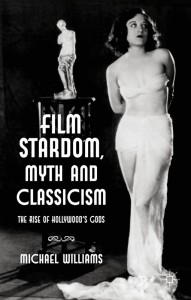Gods and Idols
 Wonderful Things
Wonderful Things
One of the joys of studying the reception of stars is the excuse it gives to read film fan-magazines. Publications such as Britain’s Picture Show and Picturegoer are a still undervalued resource that can tell us much about cinema culture in different historical and national contexts. They bear the impress of both the industry to which they were often closely aligned, but also that of the varied tastes and inclinations of their readers, often adopting a wry and witty view upon the contemporary screen, and particularly its stars as it negotiates these audiences. A valuable exercise in teaching is to guide students towards these journals to find case studies to research. The BFI Reuben Library at BFI Southbank is a key archive here, but many university libraries hold microfilm copies of fan-magazines and trade papers, with indexes such as Film Index International (the BUFVC website has information on many others) serving as a valuable aid in research. Where available, digitized fan-magazines has increased access and made keyword searches for names or topics a very efficient exercise; scholarly indexes, including Luke McKernan’s thebioscope.net as well as the BUFVC, can point researchers in the right direction. However, while digital scans and microfilm has its place, nothing really replaces the haptic quality of gently leafing through an original copy in a library, and the subtle colours and textures of its paper. Then, one can discovers the ‘wonderful things’ and surprising juxtapositions that send research into new directions.
… the deceptive simplicity of such images belies a complex dynamic that should not be too readily dismissed
With the post-Gladiator revival of antiquity on the Hollywood screen, and digital technology painting ever-more detailed patina upon old forms, an increasing number of publications are available for further study. Most recent is Maria Wyke and Pantelis Michelakis’ excellent edited collection, The Ancient World in Silent Cinema (Cambridge University Press, 2013), which emerges from a major ongoing project. This volume provides a thoroughly researched and accessible overview of not only how great Italian epics such as Cabiria (1914), Homeric adaptations, and the sensational films of Cecil B. DeMille, were instrumental in showcasing cinema’s potential, but affords an essential archival perspective on the ongoing preservation and availability of these films for study and entertainment. Jeffrey Richards focuses on the cultural context of the epic genre in his survey of Hollywood’s Ancient Worlds (Continuum, 2008), focusing in particular on the 1950s and 60s. Reading lists can benefit in particular from other works by Wyke and Martin M. Winkler, which have explored issues of representation in classical history on screen.
A particularly rewarding aspect of contextual research into the iconic, almost archaeological, fragments of stardom is the way one is immediately drawn not only to the cinematographic phenomenon of stardom as it shifts between different historical and social contexts, but to the fruitful interconnections with other cultural forms and disciplines, whether history, archaeology, literature, art history, architecture and design, television, gender and sexuality studies and, of course, classical reception studies. ‘Classicism’ is not the universal, monolithic construct it is often taken to be, but a nebulous, contradictory and ever-shifting construct. In exploring how the ancient past has been adapted to serve the needs of the present, one learns a lot about how different media have been deployed to make the past engaging. This makes it a complex, but fascinating subject of study.
Dr Michael Williams
University of Southampton
www.southampton.ac.uk/film/michael_williams
 Learning on Screen
Learning on Screen